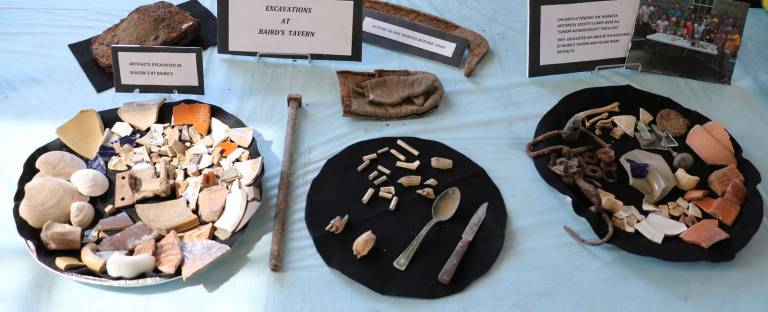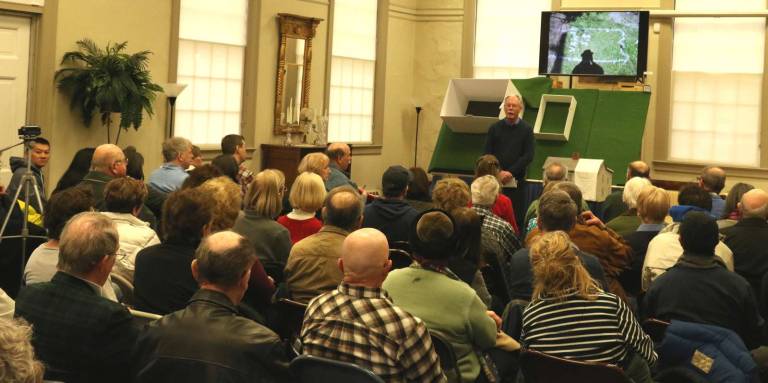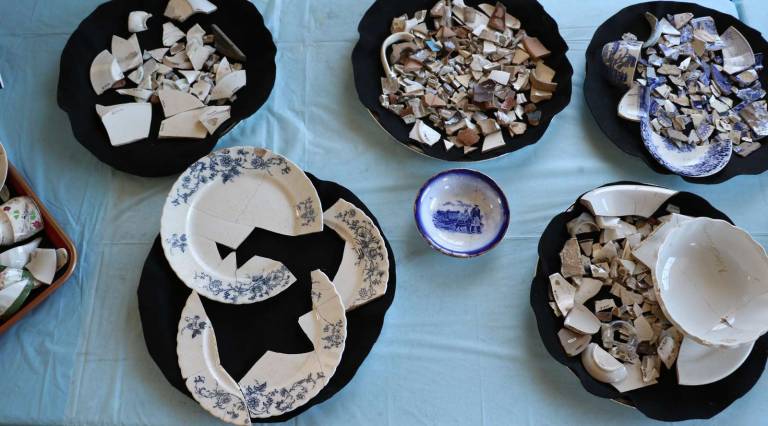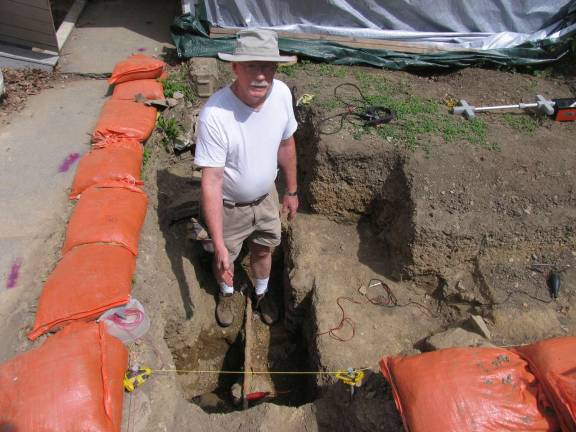Unearthing history




WARWICK — It was a full house at the Buckbee Center on Sunday, March 26, as the Town of Warwick Historical Society's Shingledig archaeological team presented the highlights of their 2016 digging season at Shingle House and Baird's Tavern.
Team members Dot Zwerin and George Knight, along with Mike Mohyla and Vicki Braidotti, used a large diorama of the Shingle House site, along with photos of the season's activities, to allow the approximate 80 attendees a close-in look at what the team found in 2016.
They also provided a table display of many artifacts from the sites, ranging from Jim Baird's 1990's finds at Baird's Tavern to Dot Zwerin's last minute of the last hour 1805 coin find at Shingle House.
The 1764 Shingle House on Forester Avenue is the oldest remaining building in the Village of Warwick.
A stone block house built as a defense against attacksAnd in August 2013, a group of fourth-graders from the Warwick Historical Society's Summer Camp were participating in an archeological dig behind the structure when they made an interesting discovery.
They had uncovered the remains of a cistern. That led George Knight, a volunteer at the Warwick Historical Society Archive, to do more research on the historic house, which is one of the buildings owned and maintained by the society and currently undergoing restoration.
Knight was aware of a story that a stone block house had originally been built a few feet behind the house as a defense against Native American attacks and which was later used as slave quarters and a summer kitchen.
Archival records from 1927 by village resident Benny Sayre briefly mentioned the building but indicated that it no longer existed.
Last summer volunteers worked on the site using four-inch trowels, paint brushes, a dust pan, two-gallon buckets and a sifting screen. Any recovered artifacts were cleaned, identified, photographed and cataloged.
1753 British half-penny, 1864 Indian Head pennyThe numerous artifacts on display for the presentation included a 1753 British half-penny, an 1818 U.S. cent and an 1864 Indian Head penny along with beverage and medicine bottles, buttons, pottery and dish shards, glass, clay pipes, doll heads, marbles, nails and animal bones.
The Shingledig archaeological team also outlined plans and targets for the 2017 season, set to kick off as soon as weather permits.
That will include excavations of the newly located early cistern, an unanticipated large void behind the cellar steps, the chimney and hearth of the 1764 buried stone house and the exploration of what may turn out to be the long-sought Shingle House well.
Last summer, the four-foot by four-foot mystery was located at a depth of five feet through the magic of ground-penetrating radar.
Volunteers neededThe team is currently looking for volunteers, especially those interested in the processing and recording of artifacts.
This is a less-strenuous activity than the digging itself and requires no prior experience or training.
If you would like to participate contact George Knight at gek@warwick.net or the Historical Society at 986-3236, ext. 101 or visit www.whsny.org.
- Roger Gavan